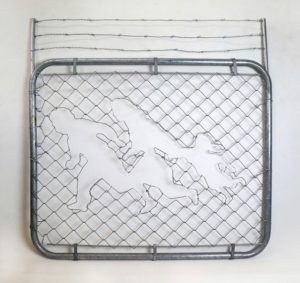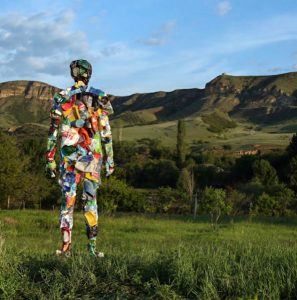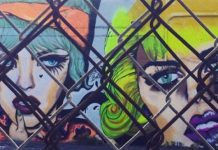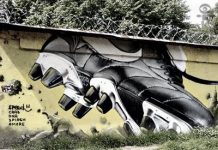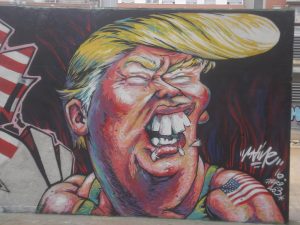The bonds between Street Art and Pop Art are strong and deep. Pop Art, blooming in the 60s and 70s — with Andy Warhol, Roy Lichtenstein, Richard Hamilton and Robert Rauschenberg as it’s masters — never left the art world and has strongly influenced contemporary art. Pop Art’s bright colors, pop culture images, (dark) outlines and highly recognizable features are still prevalent in Street Art. All formal influences aside, however, one fundamental difference remains: Street Artists present their canvasses on the street.
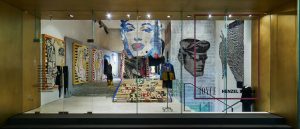
Pop-art has always been a traditional art form when it comes down to presentation. Pop Artists made their work at home or in an atelier or studio, and presented it through private showings or in galleries, and later on in museums — never on the streets. Yes, you could view the works through gallery windows, but traditional display on canvas or wood, sometimes metal, always remained an aspect of their work.
Enviromental Art
In the early 70s there was a small international set of artists who took a radical new approach to displaying their work, mostly installations off some sort. They took it outside. These ‘Enviromental Artists’ presented their oftentimes large scale fabric, metal, steal, concrete or wooden constructions in an environment that was integral to the work. This art could not exist without the space and environment it was presented in. How audiences came upon the artwork was also taken into account, down to their very perspectives and viewing axes. Pioneers in this field were: Christo Vladimirov Javacheff and Jeanne-Claude.
Christo and Jeanne-Claude
Bulgaria-born Christo and Morocco-born Jeanne-Claude first met in Paris in 1958. One of their best-known earlier collaborations was Running fence (1976). It consisted of a veiled 39.4 km long fence extending across the hills of Sonoma and Marin counties in Northern California. Or, on a more modest scale Valley Curtain, Rifle in Colorado 1970-72, depicted below. Not only was their work shaped by landscape and space, their intention was also to think about the environment.


Great Street Art murals play with these elements as well. Street Art makes you think about what you see (the image), from which direction, angle or distance the canvas can best be viewed and how the depiction relates to the environment.
Over the past decade, as the social and cultural aspects of climate change have made themselves felt, environmental art has become a mainstay of exhibitions around the world. “Environmental art” often encompasses “ecological” concerns but not exclusively so. Take for example French artist Edith Meusnier or German artist Nils Udo. Meusnier examines the notions of sustainability and vulnerability. Her textile installations are placed outdoors, in places such as castles’ parks, the cloisters of monasteries, parks in front of museums. She starts every new project by carefully choosing a specific location, since her installations are defined by their settings. Her pieces are vividly colored and often joyful, but more often than not discuss serious themes, such as the interaction between public space and art, sustainability and other environment-related issues. Udo elevates natural spaces to works of art. By means of the smallest possible interventions, living, three-dimensional natural space is reorganized, unlocked and put under tension. That is, for a finite period of time. One day, the intervention is wiped away, undone by nature without leaving a trace.
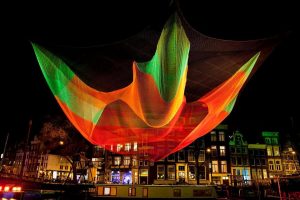

Evgeny Ches
Evgeny Ches, a street art artist based in Moscow, has a unique way of combining art with nature. His cellograffiti depict various animal species that are displayed in what appears to be their natural habitat. From realistically designed animals such as a squirrel in the woods, a duck in the meadow or a polar bear in the snow to a fantasy dragon in a green forest, nothing is too much for him. His displays are very clever and highly original: between two posts, he stretches a thin cellophane canvas, resulting in a transparent screen on which the artist goes on to paint his animals. It is worth noting that he Ches cleans up all plastic and other waste after finishing and documenting his work.
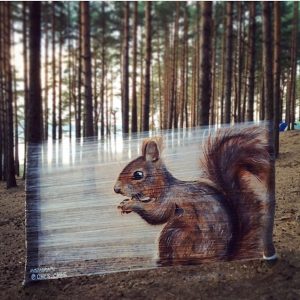
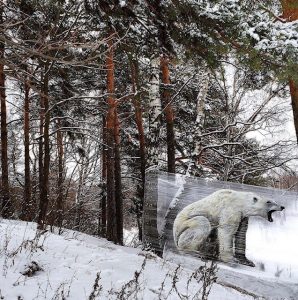
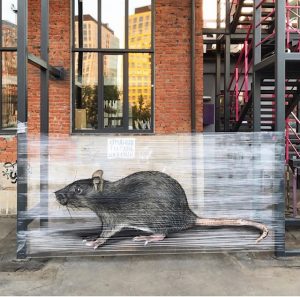
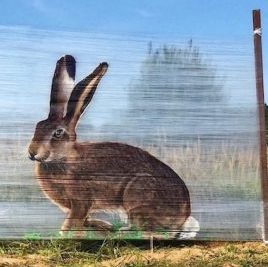
Icy & Sot
The work of Icy & Sot is another good example of contemporary environmental art. Both were born in Tabriz, Iran, and they consider space as spatial matter as well as – more abstractly – freedom, particularly the freedom to move and to be active. Their artworks “FREEDOM” and “INEXORABLE” refer to boundaries; through their titles and through their representations, but also through the use of transparent materials and the placement of their work in public spaces. Looking at their work, it is impossible not to think about freedom, space, boundaries and nature. As an increasing amount of Street Art prompts us to do. It will be interesting to see how the relationship between Street Art and Environmental Art will evolve.

